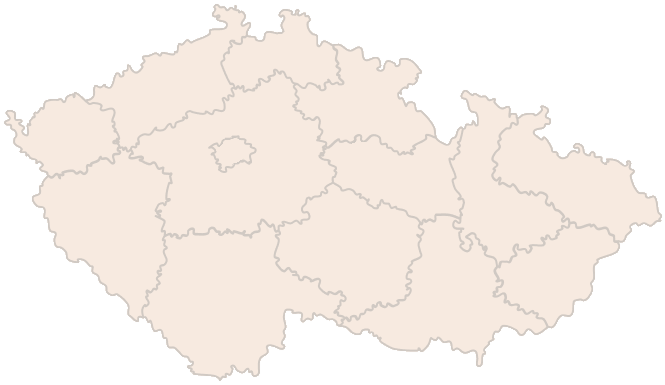What is joint taxation of spouses and why was it introduced?
Joint taxation of spouses in the Czech Republic was regulated by the Income Tax Act. It was introduced from the 2005 tax year and allowed spouses to reduce their total tax liability.
The joint taxation of spouses was a tax institute designed to reflect the economic reality of families, especially those where one of the partners earned significantly more or where one of the spouses did not earn at all. The system made it possible to reduce the tax burden by adding the income of both spouses, dividing it by two and calculating the resulting tax based on that amount. This resulted in a significant tax reduction for couples with different incomes.
In fact, progressive taxation was in force at this time. Instead of the current 15%, the taxes were 12%, 19%, 25% and 32%. So high-income couples could make significant savings through compounding.
The main objectives of the introduction:
- Supporting families: Providing economic relief to families where one partner is caring for children or not earning.
- Fairer tax system: Reducing disparities between households that have different income patterns.
- Promoting marriage: Creating financial incentives to marry and live together.
Are you solving a similar problem?
Taxes and the law? Leave it to us
Are you wondering how to make the most of your taxes and take advantage of available spousal or family benefits? Even though joint taxation no longer exists, there are still plenty of ways to save. Our law firm can advise you not only on legal issues, but also on taxes.
That's what I'm wondering
- When you order, you know what you will get and how much it will cost.
- We handle everything online or in person at one of our 6 offices.
- We handle 8 out of 10 requests within 2 working days.
- We have specialists for every field of law.
Historical perspective: when and why did it end?
The joint taxation of spouses was introduced in 2005 under the government of Stanislav Gross and was valid only until 2007. The reason for the abolition was the tax reform of the Miroslav Topolánek government, which sought to simplify the tax system and introduce a flat tax.
The government at the time argued that it was administratively difficult because tax returns were complicated for married couples. It also referred to unfairness to unmarried couples. Critics argued that the system only favoured formal marriage and did not reflect modern cohabitation patterns. Last but not least, the state was losing considerable sums of money through joint taxation of spouses, which seemed disadvantageous in times of economic crisis.
How did joint taxation of spouses work?
The principle was relatively simple, but its application depended on specific rules. Here is the detailed procedure:
- Calculating the joint tax base: the income of both spouses was added together. If one spouse had little or no income, the total tax base was effectively “spread” over the lower rate.
- The resulting amount was divided by two. This simulated a situation where both spouses had the same income.
- Calculating tax on one half: tax was calculated on this amount at the applicable rates.
- Doubling: The resulting tax amount was multiplied by two, which represented the tax liability for the whole couple.
What did this look like in practice?
The husband has an annual income of CZK 900,000, the wife CZK 0.
- Adding the income: 900 000 CZK + 0 CZK = 900 000 CZK.
- Division: 900 000 CZK ÷ 2 = 450 000 CZK.
- Calculation of tax: Tax was calculated on the amount of CZK 450 000 and then the result was doubled.
Tip for article
There are still a lot of questions around tax returns. Read our article and get answers once and for all.
What were the advantages of joint taxation of spouses?
There were several important advantages of joint taxation:
- Tax savings for families: families where one of the partners had little or no income could make significant savings through joint taxation.
- Support for maternity and parental care: The system reflected the fact that one spouse often stayed at home to care for the children.
- Motivation to formally marry: Economic advantage may have been a reason for many couples to marry.
However, the benefit was not available to, for example, registered partners, which critics pointed out as an injustice. They said the system did not take into account long-term unmarried partners and other forms of cohabitation.
Alternatives in the world: How does it work elsewhere?
Joint taxation of spouses or similar tax mechanisms exist in other countries. Germany offers a system called “Ehegattensplitting” which is very similar to the Czech model. Income is split in half and taxed at a progressive rate.
The French system allows the household income to be divided among all members, including children, which results in significant savings for families with several children.
In the US, spouses can also file a joint tax return, which may save them money but also puts them at risk of higher taxes in certain situations.
Current alternatives to joint taxation of spouses in the Czech Republic
Although joint taxation of spouses has been abolished, there are other forms of tax support. The first of these is the spouse tax credit. When one of the spouses has an income of no more than CZK 68,000, he or she can claim a tax credit of CZK 24,840. This tax credit is discussed in more detail in a separate article.
Another tax benefit is the child tax credit. This can be applied to one’s own child, an adopted child, a child in substitute care, a child who has acquired full legal capacity or has reached the age of majority in foster care, or the child of the other spouse, one’s own grandchild/grandchild or the grandchild/grandchild of the other spouse, if the parents do not have sufficient income on which to claim the child tax credit. Again, see our article for more information.
Frequently asked questions on joint taxation of spouses
Why was joint taxation advantageous?
Because it allowed you to reduce your tax liability by spreading your income across lower tax brackets.
Can joint taxation be reversed?
There are proposals to reintroduce it, but there is no concrete plan yet.
Who would benefit from joint taxation today?
Primarily for single-income families or couples with a large income gap.
Joint taxation of spouses was an effective tool to support families, but it has ended due to wider tax reforms. Even though it is no longer available today, its legacy is still relevant in discussions about a fair and efficient tax system.
Summary
The joint taxation of spouses was a tax instrument in place between 2005 and 2007 that allowed spouses to spread their income and reduce their tax liability. The main benefits included significant savings for families with one income or a large income gap, support for maternity and parental care, and incentives to marry. Joint taxation of spouses ended mainly because of the administrative burden, the lack of consideration for unmarried couples and the economic crisis, which pushed for a simplification of the tax system. Today’s alternatives to this benefit are the spouse’s credit or the child’s credit.




